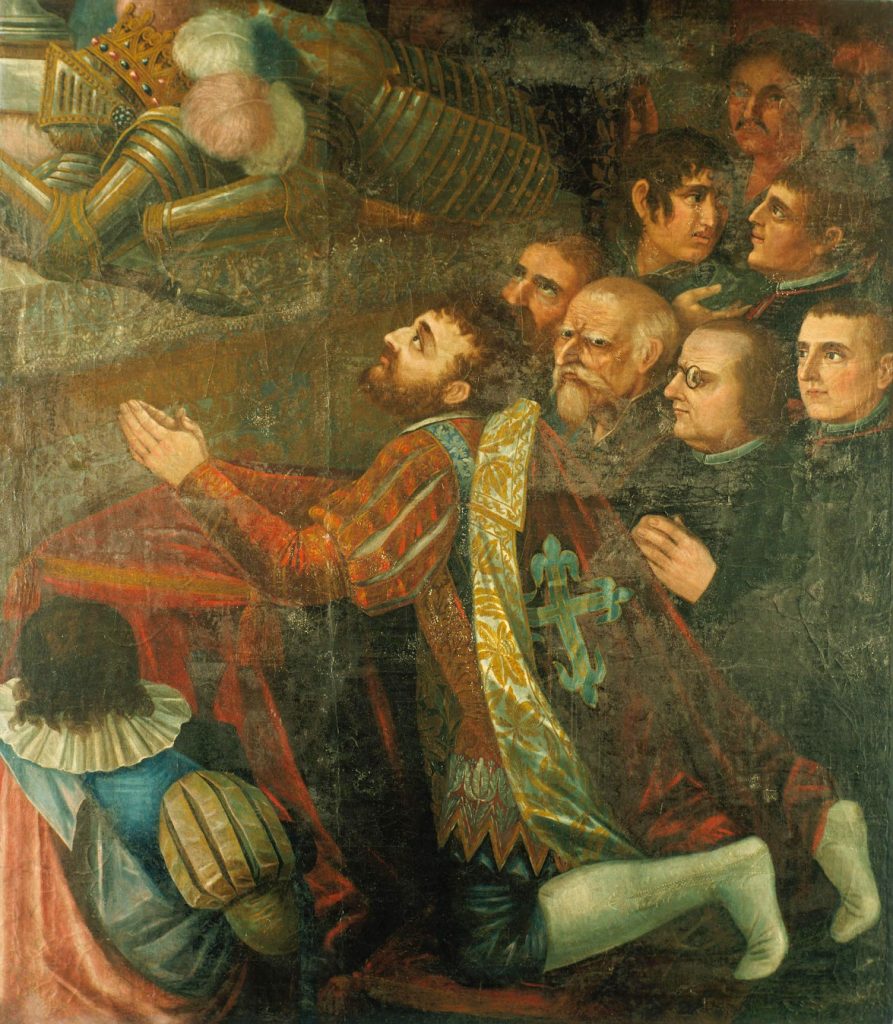
Dom João I laying his weapons at the altar of Our Lady of the Olive Tree after the Battle of Aljubarrota
Author: Friar Manuel dos Reis
Date: 1665
Material: Oil on canvas
Dimensions (cm): H 174 x W 152
Provenance: Guimarães, Igreja de Nossa Senhora da Oliveira
Inventory No.: MAS P 52
In this canvas, Dom João I is depicted as a pilgrim, barefooted and on his knees before the altar of the Lady of the Olive Tree, thanking for the victory at the Battle of Aljubarrota. On the altar, there are his arms. Next to the king there are several figures that may be portraying members of the chapter of the Colegiada de Nossa Senhora da Oliveira of the time, among whom there’s one with glasses that may be the commissioning prior himself, Dom Diogo Lobo da Silveira.
This canvas from the 17th century was commissioned, together with three others (MAS P 50, MAS P 51 and MAS P 53), to the friar-painter Manuel dos Reis by the previously mentioned prior of the Collegiate Church. The purpose of this commission was to make a big altarpiece to decorate the high altar of the Igreja de Nossa Senhora da Oliveira. After sixty years under the Spanish rule and right after the Restoration war, Dom Diogo Lobo da Silveira wanted to propagate the deeds of the Portuguese and to stimulate the patriotic spirit.
The four paintings that formed the altarpiece had two important kings in the History of Portugal represented: Dom Afonso Henriques, the first Portuguese king, and Dom João I, the first king of the second dynasty. These paintings acted as political ex-votos, that is, offerings to thank Our Lady of the Olive Tree for Her intercession in difficult moments undergone by the Portuguese. It is important to notice that these paintings tell a historic episode from the 14th century, but they were painted three centuries later, in the 17th century, so, there is a certain anachronism, which means that the characters are not dressed following the fashion of the 14th century, but that of the 17th century, when the painter lived.
